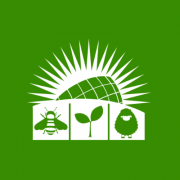Amplifying Clean Energy with Conservation Part Two: Leveraging Electric Transmission Lines for Stewardship
Across the U.S., many cities, counties, and states are taking advantage of affordable renewable energy sources, such as solar and wind energy. Over the past nine years, the price of installing solar energy projects has decreased by 70 percent, while the average cost of constructing a wind energy project has fallen by more than 67 percent per kilowatt hour since 1983.1,2 This rapid decline in cost has empowered Americans to embrace affordable, clean, and renewable energy. While all investments in conservation promote environmental improvement, developers can follow a few best practices to ensure project success. For example, native seed mixes offer the greatest return on investment when aiming to provide ecosystem services, such as habitat for pollinators and wildlife, as well as improved water quality and soil health. If possible, project developers should prioritize native seed selections over naturalized, non-invasive species of vegetation. Pollinators play a critical role in the robust food, fuel, and fiber production economy of the Midwest. By pollinating agricultural crops, this group of insects is crucial to ensuring economic and food security. Research shows the populations of all pollinators, including honey bees, native bees, and monarch butterflies, were three-and-a-half times greater on sites with investments in the reestablishment of native vegetation in central Iowa when compared to control sites. Seeding a site with native and naturalized, non-invasive vegetation presents opportunities for the introduction of livestock grazing for management. For example, pollinator-friendly solar sites have seen success with rotational grazing of sheep as a management option. Sheep are recommended for pollinator-friendly solar projects because goats and cattle could cause damage to on-site equipment. Renewable energy sources, such as wind and solar, are growing rapidly. As the industry continues to create hundreds of thousands of jobs, stimulate local and state tax revenue, and reduce greenhouse gas emissions, new investments in electric transmission infrastructure will inevitably occur. By developing resources for site managers of renewable energy infrastructure, public officials at all levels are well positioned to add value to these projects. Investments in native and naturalized, non-invasive vegetation ensure habitat for at-risk pollinators, including the monarch butterfly, while creating habitat for vulnerable wildlife species. These species are crucial for economic and food security in the Midwest and underwriting renewable energy projects with perennial vegetation improves quality of life for all.


